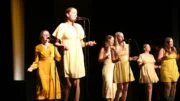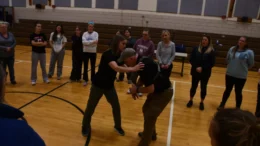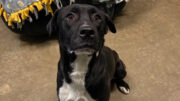Proper pruning of landscape trees improves their structural strength, maintains their health, enhances their beauty, and increases their
value.
Why Prune Trees?
Proper pruning of landscape trees improves their structural strength, maintains their health, enhances beauty, and increases their value. Pruning becomes advisable under the following circumstances:
- Trees have crossing branches, weak branch unions, or other defects.
- Branches are dead, dying, decayed, or potentially hazardous.
- Lower branches interfere with people or vehicles, or block visibility of signs.
- Branches are growing into buildings or utility wires.
- Limbs have been broken by storms.
- Trees have grown too large and might injure people or damage property.
Landscape trees not only make homes and communities more livable, they also improve our environment and can increase the value of a property by up to 7 percent. Protect and enhance trees as true property assets with proper pruning to keep your worthwhile investments healthy, safe, and providing their environmental benefits efficiently!
Pruning Objectives
Pruning focuses on maintaining tree structure, shape, health, and safety through the following objectives established by the American National Standards Institute, the International Society of Arboriculture, and the latest research. The “natural pruning system,” used most often, retains and promotes the characteristic form of the species or cultivar. Look for language in your contract specifying the pruning system (usually “Natural”), type of cut, and the following pruning objectives:
- Improving structure develops a strong and safe tree architecture by influencing the orientation, spacing, growth rate, strength of attachment, and ultimate size of branches. See the “Training Young Trees” section below.
- Risk mitigation includes pruning to reduce the likelihood for branch or whole-tree failure. It covers dead, diseased, decayed, hanging, cracked, broken, detached, excessively long, or large-diameter branches over 50 percent of the parent stem, and branches outside the normal shape of the crown.
- Providing clearance removes branches to minimize interference with people, traffic, lines of sight, buildings, lighting, other plants, or powerlines. This objective achieves the practice of ensuring safe and reliable utility services through directional pruning.
- Maintaining health prunes out infested, infected, damaged, or rubbing branches.
- Reducing crown density removes crowded, weakly attached, or low-vigor branches and sprouts at the crown periphery (formerly called “thinning”). Avoid lion-tailing where excessive removal of interior branches results in a concentration of growth and leaves at branch ends.
- Restoration improves the structure, form, or appearance of trees after topping, severe heading, vandalization, lion-tailing, or storm damage.
- Size management makes the tree smaller while maintaining its natural shape.
You may also use objectives such as flower or fruit production, improving a view or aesthetics, and managing wildlife habitat less frequently.
Who Is Qualified to Prune Trees?
Anyone who understands plants and has the proper tools can do simple types of pruning, such as cutting lower branches from small trees. But only trained individuals should structurally correct young trees from the ground. And leave the climbing into trees to qualified arborists —that type of tree work requires knowledge of scientifically based pruning techniques, tree physiology, and safety practices, as well as experience working with various tools and tree species. Because shoddy and unsafe work abound, the International Society of Arboriculture (ISA) led the development of national standards for pruning and safety. Please leave the potentially hazardous activities associated with climbing trees, including using power tools and especially working near electric lines, to qualified professionals who follow these standards.
This publication offers guidance for those who want to prune young trees. It can help you find a qualified tree professional, understand proper pruning practices, and recognize work that could damage trees.
Selecting a Tree Care Professional
In tree work, the adage “you get what you pay for” often comes true. To remove the risk of shoddy work, preferably use an ISA Certified Arborist. A qualified arborist keeps up with proper, safe tree care techniques, has insurance, follows the ISA code of conduct, and will provide high quality work at a fair price. It is difficult, if not impossible, to repair damage instigated by poor pruning. The following guidelines can help you select a qualified arborist and ensure proper tree care.
According to U.S. Occupational Safety and Health Administration of the Labor Department regulations and the American National Standards Institute, only specially trained line clearance tree trimmers are permitted to prune trees close to electrified lines that carry more than 750 volts.
For referrals, look for Certified Arborists by zip code at www.treesaregood.org or contact your local municipal arborist or the extension office in your county. Arborists certified by the ISA have passed a rigorous knowledge test, follow a code of conduct, and must continue their education to maintain competency. Reputable tree companies generally do not solicit door to door or have topping listed as a service. They rely on industry standards and ongoing recommendations for their repeat customers.
Always obtain at least two or three written bids on your tree work. Usually, these tree care firms will do so at no cost. Terminology used on bids should match the tree pruning guidelines and standards explained in this publication. Consider another firm if terms like “topping” or “rounding over” show up in the paperwork. Do not blindly accept the lowest bid. Remember, in tree work a good job can be slightly more expensive. Try to schedule work in the fall or winter, when rates may drop. Ask to be shown proof of liability and workers’ compensation insurance.
Ask the bidders for references and where you can see trees to examine their work firsthand. Look for the following to indicate proper pruning:
- Use of branch removal and reduction cuts, rather than heading cuts or topping, to preserve the natural form and branching habit of the species
- Cuts placed just outside the branch collar, not flush cuts
- Absence of torn bark on cut branches with no sign of bark punctured by climbing spurs
- No lion-tailing (clumps of foliage at the ends of branches caused by removing all or most of the inner foliage)
- Cut surfaces not treated with wound dressing or tree paint, which can injure trees
Pruning Contract Specifications
Familiarity with pruning methods helps you hire a qualified arborist who will do the job right. Work specifications will depend on your objectives and the species, condition, and size of your tree(s). Once you have decided on an arborist, ask for a written contract that briefly but clearly states all the following:
- Plant name and location
- Natural pruning system and objective(s)
- Part type to remove (live or dead branches, infections), branch size range (diameter), location within crown (over street, whole crown, near house), removal amount (all dead branches over 2 inches diameter, percentage of foliage, or branch number)
- Plan for cleanup and disposal of debris and disposition of firewood or other products
- Start and completion dates
- Total cost of work to be done, not just total cost per tree
- Terms of payment (recommend payment after completion of work to customer satisfaction)
Types of Pruning Cuts
A branch removal cut (previously termed a “thinning cut”) removes a branch at its point of origin on the trunk while retaining the branch collar and branch bark ridge (if present). A reduction cut (previously called “cutting to a lateral”) shortens a limb to a lateral branch large enough to resume growth of the pruned limb, typically at least one-third the diameter of the branch or stem being removed.
Branch removal and reduction cuts leave no stubs; remove damaged, dead, or weak branches; reduce the length and weight of heavy limbs; or reduce the height of a tree. Careful reduction cut placement ensures distribution of ensuing growth throughout a tree to retain or enhance the tree’s natural shape. These two cuts remain the ones used most on live trees.
A heading cut removes a branch or stem between nodes (where the shoots arise, thereby leaving a stub) to a bud or back to a live branch typically less than one-third the diameter of the branch being removed and not large enough to assume the growth of the pruned branch. For example, repairing storm damage or reducing the weight or leverage of a large limb may require a heading cut. This differs from “topping,” which is the reduction of tree size without regard to long-term tree health or structural integrity. In almost all cases, topping permanently damages a tree’s health, structure, and appearance.
The branch collar is one of the most important tree parts associated with pruning. It is the area of swelling at the union between a parent stem and a smaller branch.
Tree Topping
Several reasons inform the decision against topping. Topping reduces the ability of a tree to produce food. Numerous water sprouts, all weakly attached, grow rapidly from the wounds to replace the lost crown. This new but weak crown is often more dense, unwieldy, and not the best arrangement the tree needs to gather the light needed for photosynthesis. The shock and long-term declining health that result from topping can make a tree more susceptible to insects and diseases, leading to an earlier death. Decay can move quickly through the tree vertically. By removing branches that protect a tree’s inner structure, topping can lead to sunscald of remaining branches, thereby attracting insects and infection. With a tree’s natural form and beauty disfigured, topped trees become ugly and more susceptible to storm damage. Topping can reduce the value of a large ornamental tree by thousands of dollars. Although tree topping may cost less and take less time and knowledge than using branch removal and reduction cuts (the proper pruning techniques), you essentially pay for an inferior service and end up spending more in the long run as the tree sprouts and decays.
The practice of topping only becomes appropriate when removing a tree by shortening sections of limbs as the tree comes down.
Training Young Trees
Before pruning a young tree, first consider the natural form and desired future growth of the tree. Some trees like pines and sycamores have strong central trunks and require little pruning. Others, such as oaks and maples, branch out more. A natural pruning system accentuates the natural branching habit of a tree and corrects structural defects and future problems by developing a mechanically stronger and healthier tree.
A few minutes of thoughtful pruning on a young tree can eliminate hours of costly future pruning when the tree is mature. When planting a tree, prune only broken, malformed, or diseased branches. Newly planted trees gradually restore the balance between roots and branches; excessive pruning can delay normal growth and establishment. Ideally, train a young tree over several years to correct structure, and keep pruning wounds small by removing branches before they exceed 1 inch in diameter. Maintain one dominant trunk by removing any other leaders (dominant stems). Some exceptions apply, such as for special forms like weeping cultivars. For the first two years, leave lower branches as “temporary” to produce food for the growth of roots, trunk caliper, and branches.
Consider the permanent height of limbs when pruning for structure. Street trees or trees along walkways must have limbs high enough to accommodate pedestrians and vehicular traffic, signs, and lights. Minimize the need to prune for clearance by purchasing trees that have been grown in a nursery to street tree specifications.
Because trees grow from their tips and tops and not from the bottom, allow for appropriate long-term clearance. Branches growing 6 feet off the ground will always remain at that height and may droop as they grow longer. If clearance is not a problem, keep branches on the tree to help the tree grow.
About two or three years after planting a tree, examine it closely again and prune any broken, malformed, or diseased branches. Remove any suckers from the base of the tree. Step back to look at the tree from all sides and select the permanent branches and branch structure that the tree will have for its lifetime. When deciding which branches to remove, consider the following:
- The most common training objective is to grow a mature tree with one strong central-growing trunk (leader) and well-spaced lateral branches on the trunk.
- Base your total removal of live branches or foliage amount on tree vigor. In the past, it was up to 25 percent per year, which is too broad to apply to all trees. Young trees, if healthy, can generally withstand wounding more than mature trees.
- Avoid pruning trees from bud break until full leaf expansion and as they become dormant (fall weather makes this variable) to avoid stressing the trees’ energy resources. Once dormant, resume pruning.
- Prune back or remove any unusually long branches or stems that compete with the leader for dominance.
- Gradually, over several years, remove lower branches to provide safe clearance and visibility.
- Remove any branch that crosses or rubs another branch, keeping branches that conform to the natural form of the tree. Prune out crowded branches.
- Wide branching angles between the limb and trunk break out less than narrow angles. Remove branches that have narrower angles between branch and trunk than are typical for the species.
- Included bark, a structural flaw, becomes embedded in a union between branch and trunk and has no branch collar. Place a cut at the base of the union to remove this weak junction.
- Space branches radially around the trunk and look at maintaining 18 to 24 inches between branches on small growing trees and 24 to 36 inches on large growing trees.
- Remove no more than one-third of sprouts if found within the crown. These shoots have important dampening effects on forces such as wind.
- Growing habits of smaller ornamentals, such as a Japanese maple or a dogwood, differ from those of larger growing trees. Tip growth terminates as growth continues at one or more lateral branches, leading to a stratified, lower branching structure without a strong central growing leader. An ideal structure may need repeated efforts of removing crossing branches following the same pruning principles.
- Prune hawthorns, crabapples, pears, and other flowering trees immediately after flowering.
Planting the right type of tree in the proper place and training the tree when it is young reduces the need for future maintenance. Your investment of time, well-placed cuts, and researched maintenance practices is the best way to create safe and beautiful mature trees over time.
1. Prune competing leader(s). Remove or prune back less vigorous branch(es) to prevent potential structural weaknesses.
2. Prune any malformed branch.
3. Remove any crossing branch, which will affect the other branch’s growth and create an undesirable form.
4. Remove no more than one-third of water sprouts in any one year.
5. If branch attachment is more narrow than is common for the species, remove the branch while the tree is young.
6. Prune any broken or badly damaged branch.
7. Prune temporary branches back with reduction cuts or remove them completely over time. Removing these branches over the first few years provides clearance for signs, vehicles, and pedestrians.
8. If possible, twist and yank out suckers when young instead of cutting to decrease chance of resprouting.
9. Apply 2 to 3 inches of composted mulch at the tree base. Keep mulch 2 to 3 inches away from the trunk to prevent chance of rot.
Pruning Mature Trees
By the time a tree reaches maturity, providing it has had its maintenance needs met throughout its life, it should only need pruning for specific purposes like managing risk, clearance of branches from infrastructure, or restoration from storm damage. Protect and preserve the tree’s natural form. Not all mature trees need pruning and instead may benefit from a yearly inspection with perhaps a five- to 10-year cycle of pruning. Prune trees judicially. Pruning a mature tree excessively or incorrectly can cause more harm than good. Every vigorous branch removed reduces photosynthesis and the manufacture of sugar. Any cuts open the chance for decay organisms to enter the wound.
Natural target pruning properly removes a branch while protecting the branch collar, which is essential for wounds to close. First cut A, second cut B, and third cut C-D.
Pruning by Utilities
The objective to provide clearance allows for removing branches to minimize interference with infrastructure such as powerlines. Utility companies use directional pruning to redirect branches and future growth away from the conductive lines. In the long run, the tree maintains its health and structure better than with topping or leaving branch stubs. By using branch removal and reduction cuts to prune branches growing too close to lines, this practice allows extension of other branches that will not interfere with electric lines. The old practices of topping and rounding over damage tree health and encourage vigorous sprouting, which increases pruning frequency and cost.
Trees pruned under utility lines no longer retain their natural shape. They may resemble a chair, have a stair-step shape, or one entire side may be gone to prevent branch/line contact.
Utility companies managing the system determine the amount of clearance needed to maintain reliable and safe service between trees and electric lines. States often regulate this distance, which depends on the voltage carried among primary and secondary conductors. Utility companies employ professional tree service contractors to periodically prune to specific clearances.
If you plan to prune or remove a tree that will require a person, tool, equipment, or any part of the tree to reach within 10 feet of an electrified line exceeding 750 volts, notify the utility company several days in advance to arrange for proper safety precautions or use a qualified line clearance tree trimmer to perform the work.
This retains the tree’s natural shape and provides long-term safe clearance.
By Julianne Schieffer, Extension Educator, Regional Urban Forester, and William Elmendorf, Ph.D., Associate Professor






































